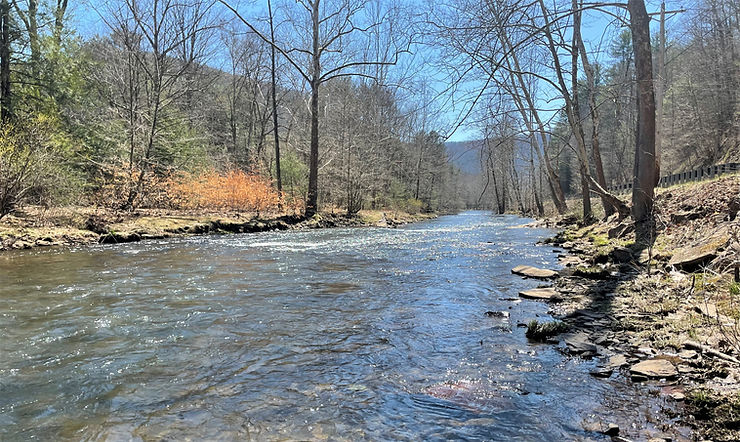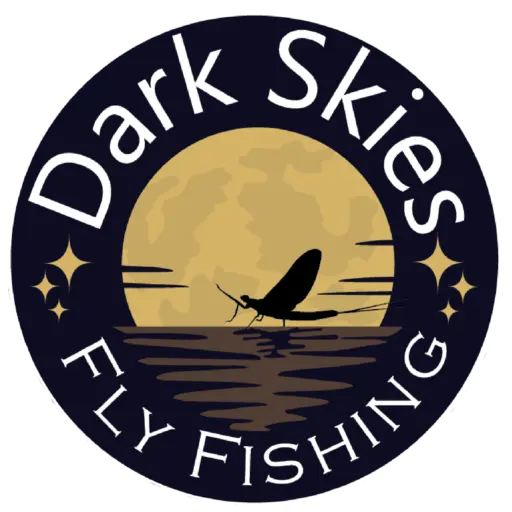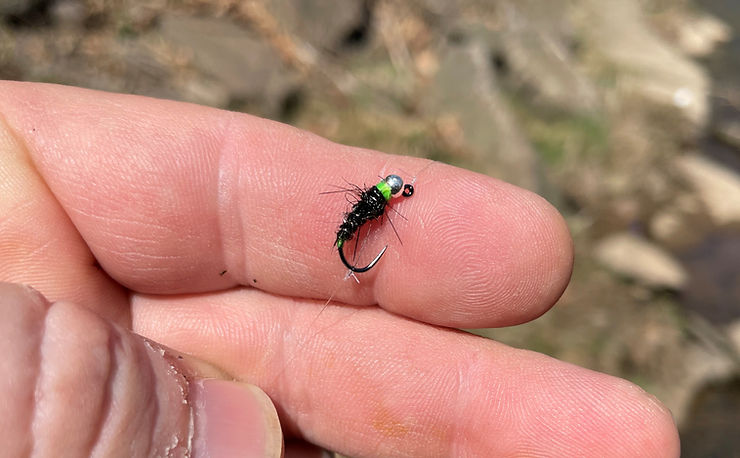Fishing and Life: An Afternoon on Kettle Creek

Heading down PA 144 past Ole Bull State Park, I could barely control my excitement. It was shortly after noon on a beautiful day, and it just felt like the trout in Kettle Creek would be hungry!
Kettle Creek is a 43-mile tributary of the Susquehanna River. It has a long history of great fishing, and although it has gone through a long period of hard years — mostly due to low water and warm temperatures — it’s still darn good. In truth, these factors have plagued all northcentral PA streams in recent years. Wild trout populations have suffered as a result, and they’re much more localized around coldwater springs than they used to be, especially come middle of June. In its lower sections, Kettle is all but barren of trout come summer, but it does become a pretty good smallmouth bass fishery.
Kettle Creek is one of the most popular streams in northcentral Pennsylvania, and for good reason. It provides a variety of water types for anglers of all experience levels. In its headwaters it is a Class A brook trout stream, and from its junction with Little Kettle near Oleona it becomes typical stocked water. It has great fly hatches, spectacular scenery, and is one of the most heavily-stocked streams I’ve ever seen.
The Kettle Creek Valley is about as beautiful as it gets. There’s a certain peaceful feeling one gets driving down the valley looking at those mountains so steep and so close. It’s prime camp country, with very few actual residents, but during peak times of the season it turns into a bustling community of fishermen. The weekend can get a little crowded at times, but there’s enough water here that you can always find somewhere to fish.
Fishing Kettle Creek
Admittedly, I had my concerns about how crowded the stream might be, especially as I drove by the Catch and Release Fly Fishing Only (CRFFO) section which was, for some reason, awfully crowded for a Thursday afternoon. But after crossing the bridge near the lower boundary of the project water, my concerns evaporated. A car here, a car there, but there were also long stretches of stream with nobody fishing at all.
I’ve noticed this trend on almost every stream with some sort of special regs section. Fly fishermen, in particular, seem to gravitate to these sections, which usually end up being the most crowded and heavily-fished places on the whole stream. Meanwhile, miles of open water, where there are usually just as many trout, are less pressured. I think it’s probably psychological. We assume a catch and release section will have more fish and greater potential for a “banner day,” but that’s not always the case. Project trout can be selective and spooky, and sometimes better fishing for less finicky fish can be had in the put-and-take sections.
That said, the project on Kettle Creek is very nice water and provides 1.7-miles of CRFFO. This section is loaded with beautiful pools, runs, and riffles. This section is well-marked along PA 144, with numerous turnouts where you can park and follow trails to the stream.
If it’s your first time fishing Kettle Creek, the CRFFO can be a good place to start because, no matter what, you’ll almost always find trout here. Not until the summer settles in does this section start to warm up too much to hold fish.
One of my personal favorite sections to fish, though, is just downstream of the CRFFO, where Kettle Creek flows close to PA 144. From the road, you can see the long series of beautiful pools and runs, and the stream here is about perfect size, around 40-50 feet wide. Downstream, below the town of Cross Fork, Kettle Creek widens considerably and seems to flatten out. There are still plenty of great pools and prime riffles to fish, but the stream’s character definitely begins to change.
Admittedly, I’m not very familiar with Kettle Creek downstream from Cross Fork. I’ve just always liked how the water looked upstream from there better, and that’s where I decided to fish that day. I parked near the end of the stretch that flows close to the road, right before a swinging bridge and decided to work upstream. I just couldn’t pass it up. The water looked so good I almost began to salivate, and to top it off, I saw not a soul in sight in either direction.
Although my family has been fishing in Potter County since the 1960s, we never made it over to Kettle Creek very often. In fact, I can think of only a handful of times when we left First Fork Sinnemahoning Creek and made the jaunt over the mountain. The problem is that, on a map, Kettle Creek and First Fork look very close to each other, but in actual travel time, they’re almost an hour’s drive apart. If you grew up fishing First Fork like I did, it can be hard to justify the journey over the mountain. The only times we made the drive was when the trout weren’t hitting – this was back in the days when everyone kept their 8-trout limit and streams often got fished out. However, we always found trout on Kettle Creek. No matter the day, weather conditions, or how long it had been since it was stocked, we always caught trout there.
Now that I live in Potter County and fish Kettle Creek fairly often, I appreciate more the quality of this stream. Its water is crystal clear and the valley is as beautiful as it ever was. Kettle Creek is now in my rotation for regular visits!
Are You Enjoying What You're Reading?
Stay up to date with the Dark Skies Fly Fishing monthly newsletter for free and receive the latest posts in fly fishing news, tricks, tips, and techniques, stream reports, as well as updates on new flies added to the Online Store and exclusive discounts!
Sign Up Now
Fly Hatches
I’ve read that Kettle Creek has such great hatches because its pH is 7.3. By comparison, a pH of 7 is neutral (in terms of acidity versus alkalinity), and most northcentral PA streams fall below between the 6 and 7 mark (more acidic). Numerous times, I have left other streams where there was nothing hatching and arrived at Kettle Creek to find plenty of bugs in the air.
This day was no different. Early Brown Stoneflies and Tan Caddis (which may have been Grannoms, but I didn’t get a close enough look to know for certain) were very active. I bumped a low-hanging tree branch and a bunch of caddis took flight.
As I slipped into the water below the swinging bridge, I noticed a couple of rises. Each fish came up exactly once and then nothing for a long period of time. I drifted a size 16 Elk Hair Caddis over them but no interest. Rather than invest too much time into matching a hatch that only a couple trout were keying on (if you could call random rises “keying on”), I tied on a purple-collared Sexy Walt. It didn’t take long to hook up with a nice stocked brown. It also didn’t take long to realize the stream was absolutely loaded with trout! As I headed upstream, I inadvertently stumbled into a pod of trout in a tiny pocket of water next to the bank and sent them bolting in all directions. I quickly found out these were just the outcasts, and the mother load was waiting for me just ahead.

Working the Water
On Kettle Creek, I always do best when I focus on the shallow runs and riffles. Sure, you’ll find them in the pools, too, but also remember that Kettle Creek is a heavily-fished stream, and so those pools get hammered. The trout that live there have “seen it all” and then some. But the trout I like to target are the ones that hold on the fringes of those pools or in the riffles and runs directly above or below.
A few reasons could play a factor. First, when trout feed (especially on the surface), they will often station in shallower, swifter water because this is the type of water where insects tend to emerge, as opposed to the long, deep, flat pools. Second, most people, particularly the spinning gear and bait fishing folks, focus on the deep pools first and foremost. Third, these riffles and runs are tailor made for fly fishing. You don’t have to work to get your flies on the bottom.
At some point, I decided to add another Sexy Walt to my line, so I dropped another length of tippet off the bend of the first one. As I was doing that, I thought what the heck, why not add a third one, too. So I did. I now had three of my favorite flies – a trotline of Walts – all ready to go!
I’d never fished a three-fly rig before. I imagine the guy who dreamed up the three-fly rig was like any inventor wanting to push the limits, unsure if the results were going to make him a hero or blow himself up. Fishing with three heavy Euro nymphs felt a little like taking a bazooka to a knife fight!
It was quite the contraption to cast, too. It required a little more patience on the backstroke and a little force on the forward stroke, but I got them out there in a reasonable fashion, and it wasn’t five seconds later that I hooked my first fish on a three-fly rig. The trout took the middle Walt, which was tied with a black body and chartreuse thread collar. I didn’t realize it but that was the beginning of a trend, and over the next couple hours, trout preferred that particular Walt by a wide margin.
After releasing the trout, I cast back out and my line immediately stopped. This time it was the stream bottom, and after a few yanks, the flies shot up out of the water at roughly the speed of light and landed in a tree branch behind me and about 10 feet up. Retrieval wasn’t an option, so I broke it off, wincing a little as I did – losing one fly to a tree is bearable, two is not ideal, but three is downright painful.
To make matters worse, I tied on a new clutch of flies and my very first back cast landed in that tree branch’s cousin – the flies never even tasted water! Again I had no choice but to break them off. At this rate, I was going to be out of flies in about 20 minutes, but I’m stubborn if nothing else, and tied on three more.
When I finally got back in the water – careful now, whoa, whoa… — another trout enthusiastically greeted my offering. And then another, and then another in quick succession. It continued like that over the next three and a half hours as I worked my way up about 300 yards of stream, plucking trout from every pool, riffle, and run where it looked like a trout should be.
The black Sexy Walt with chartreuse collar was hands-down the fly of the day. I’m not sure exactly why except that any Sexy Walt does a great job of imitating a variety of nymphs. I ended the day with around 25 trout in a little less than four hours. It was another great afternoon on Kettle Creek.
At some point near the end of every outing, I like to just sit on a rock and look at the stream and take in my surroundings. It’s important to remember that the fish are just part of the equation, and it’s often the whole experience, and where that experience takes place, that makes a moment special. Since moving to Potter County in February 2022, I can’t say that a single day has passed that I haven’t marveled at how lucky I am to live here, and to live so close to so many wonderful streams.
I’ve read that if you added up every Class A stream in the Kettle Creek Watershed, you’d have 28 streams and over 100 miles of water. There’s a lot to explore here, and Kettle Creek is just the beginning, but oh, what a beginning it is!


Article is right on. Just got back from Kettle and there are lots of fisherman, lots of trout and many places that with a little walk you have the place to yourself. Only bad thing is the hatches were not happening. I could count the mayflies I say on my fingers. Without a hatch and with the water on the cold side its was not possible for me to get a handle on the wild trout population. Yesterday the black walt with a chartreuse collar, purchased from your site was working well on Cross Fork. Stocked rainbows except one gorgeous brookie about 10″ caught by my wife. The rainbows seem very out of place in Cross Fork. The kids section in Cross Fork is a great place. My nephew’s 7 year old son caught his first several trout there and put what he learned to practice on the open water. Pictures are my oldest daughter with a wild brookie, Tara’s brookie that was hiding with over a dozen rainbows and a brown trout.
Thanks for reading and for your feedback. As always, great insights, William. Glad to hear you caught some fish, but sorry you didn’t hit many bugs.
Do you think the lack of insects is the usual break that always seems to come between the April and May hatches in this area? It seems to me like most of the traditional April hatches started earlier this year than normal and could possibly be over by now, or will be very soon. Heck, I’ve even heard reports of March Browns already coming off on Pine Creek. We just went through a stretch here of low water and very warm temps and the mayflies were coming off like crazy. So I’m curious to hear your thoughts. Are we in that transition phase or was the cold weather just suppressing the mayfly activity?
I was going to ask you the same thing. I think that is true the hatches were early and we may be in a lull. Low water and warm temps can really accelerate the hatches, which looks like has happened this year and it looks like next year I will pay better attention and book accordingly. It will be interesting to see if they resume when it warms a little. Also I never saw so many caddis pupa as on Kettle, so there are going to be some really good caddis hatches there coming soon.
I encountered an old timer on Cross Fork last Friday who told me on Thursday he hit the heaviest March Brown hatch he ever experience on Kettle just below where Cross Fork enters. He has fished all over PA and the west so I think he was correct. He also had Hendricksons on Cross Fork the previous weekend.
I really love the blue quills and hate that I missed it. On the bright side my oldest daughter took my fly rod and caught a native on a dry fly. She used to be I don’t want to fool around with flies, just let me spin fish. Now she wants to only use the fly rod.
Funny though, I put one of your sexy Walts on the spinning rod with an indicator and thats how they were catching most of their fish anyway. It out fished the power bait pink worms, which do kill and that’s what my 8 year old grand nephew used to catch a fair amount in the Cross Fork kids section. What a great idea that stretch. During the week there was no one, but on Friday and Saturday I saw a ton on young kids catching fish there.
its crazy to think of massive March Brown hatches this early in the year! I’ve seen a few come off along First Fork, too, although not in any numbers yet. I remember seeing a post in a social media group last year about a guy claiming he saw Sulphurs coming off in mid-April on the Little Juniata, and many people said no way, must’ve been a different insect. But it doesn’t seem so crazy now.
Awesome to hear my flies outperformed the Power Bait worms! Also near to hear you say about using flies on a spinning rod. I’ve done that quite a bit in the past, especially on tight streams that are next to impossible to effectively cast a fly rod due to so much brush. Some time you should try a woolly bugger on a spinning rod, and twitch it as it drifts downstream, sort of making it hop. It’s absolutely killer. I was thinking about writing a post about it but was afraid I’d be labeled a heretic! Lol.
I’m glad you had a great trip. I never realized Cross Fork had a kids section. Is that new? Have you checked out the kids section on Kettle?
Its on Kettle in the town of Cross Forks. Absolutely full of eager trout. I think there is also one in Ole Bull. The should do the same in Costello. I’ll have to try the wooly bugger thing.
I would have been seeing sulphers on my local stream in about a week, except it has gotten colder. We sometimes get a descent Quill Gorden and Hendrickson, but they often hatch before the season starts. This year it occurred before the April 7th.